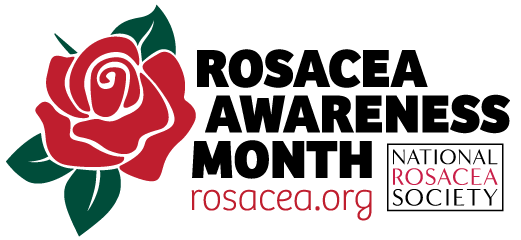 Rosacea can be a vicious cycle. The more you worry about its dreaded appearance, the likelier the stress may cause it to come crashing in at the worst possible time, showing up in the most conspicuous and embarrassing place—the face—as a redness that won’t go away, often with unsightly bumps and pimples. Fortunately today, rosacea sufferers have more reason than ever to be optimistic. The good news is that although rosacea cannot be cured, important advances in medical therapy have made it increasingly possible to achieve the next best thing: clear skin.
Rosacea can be a vicious cycle. The more you worry about its dreaded appearance, the likelier the stress may cause it to come crashing in at the worst possible time, showing up in the most conspicuous and embarrassing place—the face—as a redness that won’t go away, often with unsightly bumps and pimples. Fortunately today, rosacea sufferers have more reason than ever to be optimistic. The good news is that although rosacea cannot be cured, important advances in medical therapy have made it increasingly possible to achieve the next best thing: clear skin.
The National Rosacea Society has designated April as Rosacea Awareness Month to educate the public on this often life-disruptive disorder estimated to affect more than 16 million Americans and 415 million individuals worldwide, urging those with warning signs to see a dermatologist for diagnosis and appropriate therapy.
“Recent studies on the burden of illness of rosacea have shown just how important it is to have clear skin, as the condition can profoundly damage quality of life because of its effect on personal appearance,” said Dr. Linda Stein Gold, director of dermatology clinical research at the Henry Ford Health System. “In so many cases, all it takes is a single blemish or a single comment about having a red face to ruin someone’s day.”
In an NRS survey of 1,675 rosacea patients, 90 percent said the disorder had lowered their self-esteem and self-confidence, and 52 percent said they had avoided face-to-face contact because of the disorder. In another survey, 51 percent of those with severe symptoms said they had even missed work because of their condition.
When the signs and symptoms of rosacea are virtually eliminated, however, the improvement in patients’ lives is often dramatic. In a new NRS survey of more than 800 rosacea patients, 83 percent of those who had achieved clear or almost clear skin said their psychological well-being had improved. Seventy-three percent said it had also improved their social lives, and 63 percent reported improvement in their occupational well-being.
In contrast, among those whose rosacea had only slightly or moderately improved, just 26 percent reported improvement in psychological well-being, 22 percent in social well-being and 21 percent in occupational well-being.
“Clear skin is not only desirable, but it is increasingly attainable with the advanced medical therapies that are available today. Though they may feel discouraged, the most important thing for those battling the signs and symptoms of rosacea is to visit a dermatologist to be correctly diagnosed and treated,” said Dr. Stein Gold. “Rosacea is a disorder of varying signs and symptoms, and finding the best therapy or combination of therapies for each individual’s case is key.”
Although it can develop in many ways, rosacea typically first appears after age 30 as a redness on the cheeks, nose, chin or forehead that grows ruddier and more persistent over time, and small blood vessels may become visible. Without treatment, bumps and pimples often develop, and burning and stinging are common. In severe cases, the nose may become enlarged from excess tissue, and in many rosacea patients the eyes are also affected, feeling irritated and appearing watery or bloodshot.
During Rosacea Awareness Month and throughout the year, the NRS will conduct public education activities to reach the many millions of rosacea sufferers who may not realize they have a medical condition that can be treated, emphasizing the warning signs and urging those who suspect they may have rosacea to see a dermatologist. Comprehensive information and materials are available in the Patients section of the NRS website.
Help spread awareness during the month of April! Visit the official Rosacea Awareness Month landing page at rosacea.org/ram for ways in which you can participate, and to follow the conversation online using the hashtag #RosaceaAwareness. You can also follow the NRS on Facebook, Twitter and Pinterest for up-to-date information and tips on rosacea.